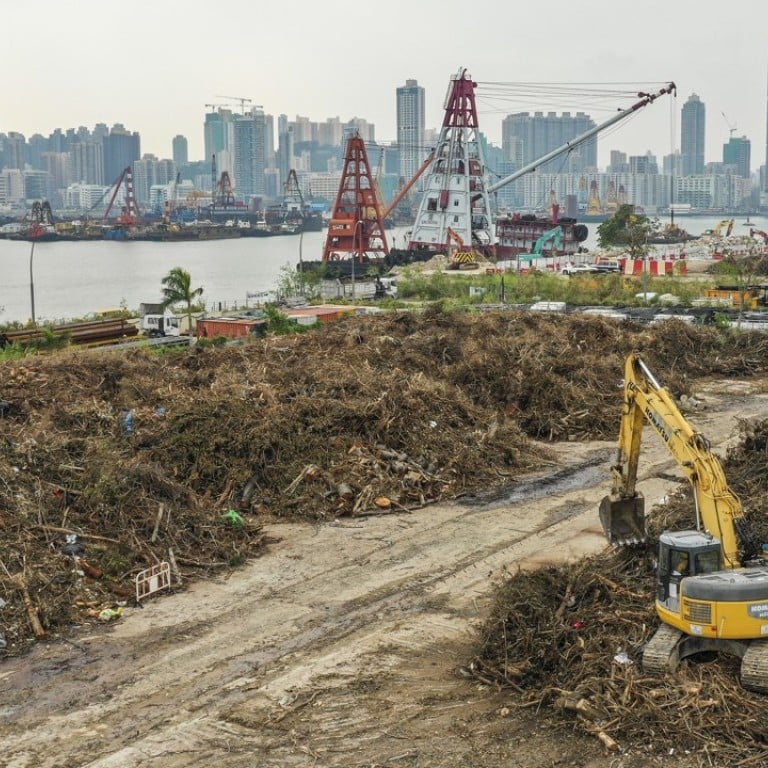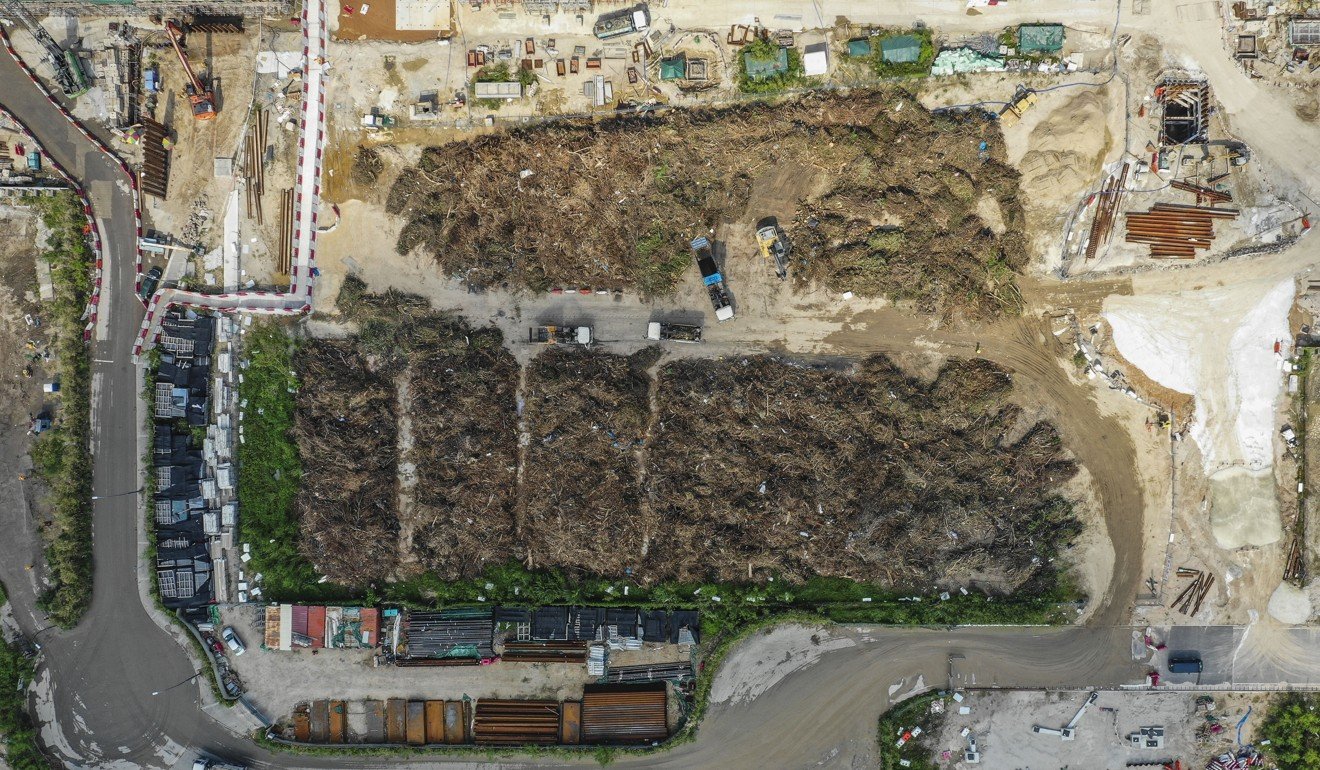
Typhoon Mangkhut felled 46,000 trees in Hong Kong. Will they end up in landfill?
Green groups and tree experts call for more wood chippers and for stricken trees to be covered as they are processed, so they can be composted
The tens of thousands of trees felled by Typhoon Mangkhut last month could end up going to landfill unless the government buys more wood chippers to process them into something usable, a green group has said.
Conservationists also called on officials to shelter the mass of tree carcasses which they piled up at the former Kai Tak airport site, to keep them dry for composting.
Mangkhut swept through the city on September 16. The strongest storm on record to hit the city, it triggered a No 10 typhoon signal. The number of reports of fallen trees received by the Development Bureau recently topped 46,000, including the cases of 11 registered old and valuable trees.

There were only 700 reports of fallen trees after Typhoon Hato last year.
Roy Tam Hoi-pong from conservation group Green Sense called on the Leisure and Cultural Services Department (LCSD) to buy the chippers, to deal with uncollected tree waste.
“The LCSD has the most resources in terms of managing trees and they have already bought some wood chippers,” Tam said. He added that the processed wood could be mulched at nearby parks to limit the amount sent to landfill and trim transport costs.
The Post reported earlier that five sites on the former runway at Kai Tak, totalling 10 hectares, were being used to store tree waste. The government faced an unprecedented challenge to clean up the rest of the trees still strewn in the streets.
Chiu Siu-wai, a retired Chinese University professor and tree expert, said the government could have reused the tree waste at Kai Tak, had the carcasses been sorted when they were collected.
She said that because the waste was collected in the open and had been exposed to rain for two weeks, the chances of reusing it had decreased greatly. Chiu said high-quality wood could have been put to good use, such as being shipped to mainland China, one of the biggest wood importers in the world.
“What the government can do at least is to add shelters to keep the tree waste dry ... it can be used for composting at the site,” she said.
Veteran tree expert Jim Chi-yung raised concerns about what he said was the haphazard collection of large pieces of trunk and branches, which ought not to be mixed with the more nutrient-rich twigs and leaves for composting. He also worried there was insufficient space for composting at the site, which was completely filled by the felled trees.
“To conduct composting properly, they need space to mix and turn the materials, using machines,” Jim said.
Chiu said the waste collected at Kai Tak would probably be sent to a landfill site and the rotting wood could cause hygiene issues by, for example, attracting mosquitoes.
Legislator Ted Hui Chi-fung said the government told him last year that seven departments sent 9,000 tonnes of green waste every year to landfill, 90 per cent of all the green waste it collected.
“The government really needs to look at tree management as a whole and set up tree laws to address all the related issues, such as the different qualities of the outsourced tree works and the qualification of arborists,” Hui said.
He added that some of the collected wood could have been used to make chairs for parks, instead of buying in chairs.
By 10pm on Wednesday, the LCSD had not replied to requests for comment.
